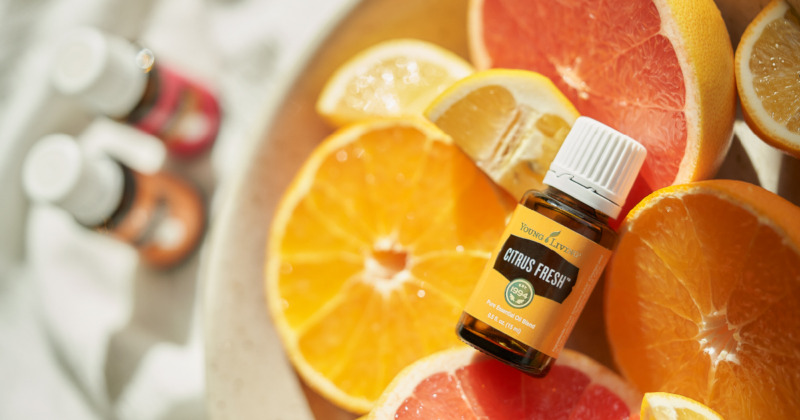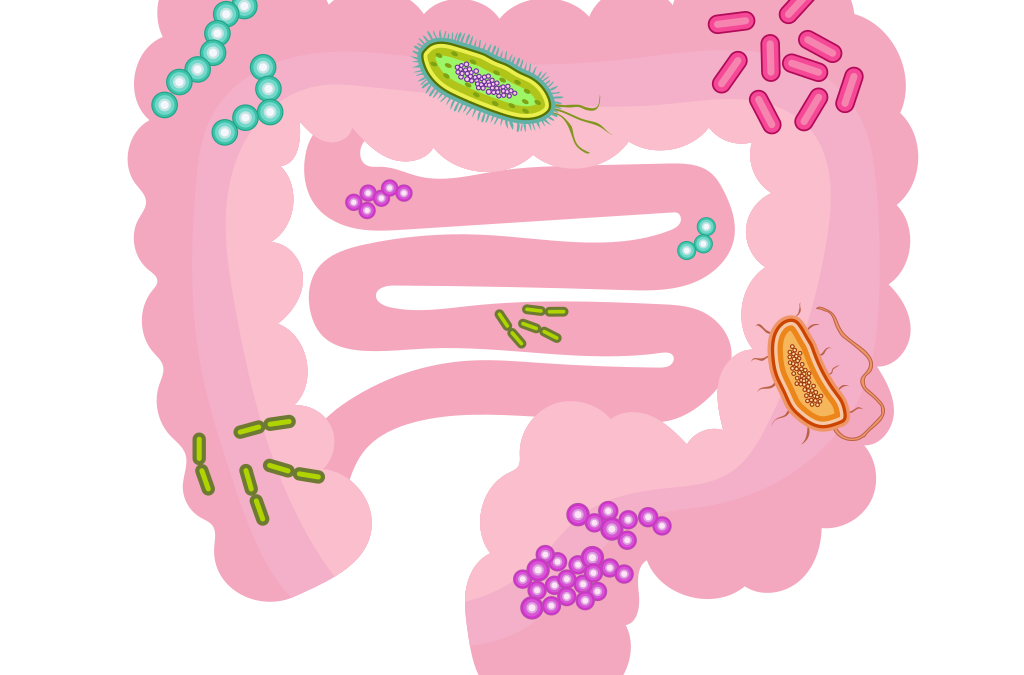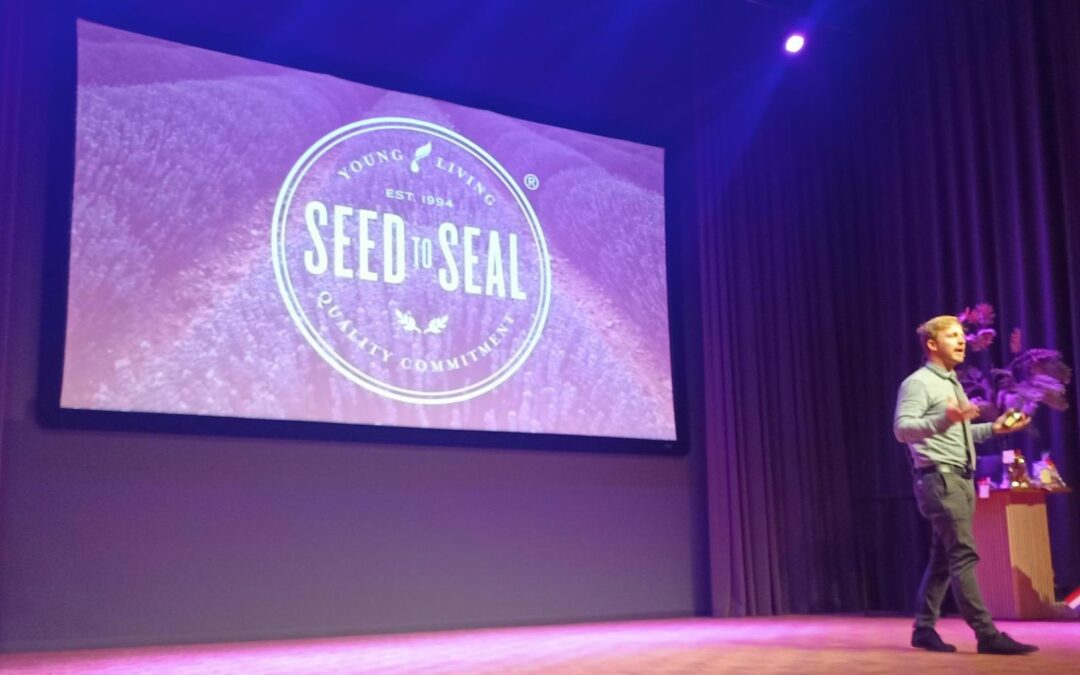
by Ed Slingerland | Jun 1, 2023 | Blog, Did You Know?, Newsletter
An essential oil can cause photosensitivity?
While known for their bright, summery scents, citrus oils are among the most common essential oils that cause photosensitivity. That’s because compounds found in citrus oils—known as furanocoumarins—greatly increase UV sensitivity. And while most photosensitive oils are citrus, other oils can contain compounds or mixes of compounds that have the same effect as furanocoumarins, meaning they’re not sun-safe either. Always check the label before application to determine the oil’s photosensitivity.
How can I know if an oil causes photosensitivity?
All of Young Living’s essential oils that cause photosensitivity are labeled. Lemon, Lime, Grapefruit, Orange, Bergamot, Tangerine, Peace & Calming®, Stress Away™, Citrus Fresh™, Gentle Baby™, and Joy™ are some of Young Living’s popular oils that cause photosensitivity, but other oils can come with these risks as well. Always check the label to see what cautions are associated with the oil you’re using.
How does Young Living decide a blend is photosensitive?
Gaging by the amount of photosensitive oil in the blend, Young Living can safely determine whether a blend is safe in the sun.

by Ed Slingerland | Apr 2, 2023 | Blog, Did You Know?, News
Inhaling Clary Sage oil helps with hormone imbalance?
During once study in 2014, published in the Journal of phytotherapy research, it was found that inhalation of Clary Sage oil may help reduce cortisol levels by 36% and also help to improve thyroid hormone (TSH) levels. The study was conducted on twenty-two postmenopausal women over the age of 50, some of these ladies were even feeling depressed. At the end of the research process, it was found that there was significant progress.
So helping to lower the cortisol stress hormone has been shown to also improve mood as a result. This is just one of many studies showing that Clary Sage has a positive impact on hormonal imbalance. The greatest benefit of Clary Sage is that it provides balance by reducing the production of estrogen in the body. Thus, this oil can offer much for many health challenges caused by extra estrogen in the body, partly and often caused by consumption of high-estrogen foods. Because Clary Sage helps balance estrogen, it is incredibly effective in a wide range of hormonal imbalances.
So whether you are looking for natural help against cramps during your period, or perhaps already know you have excess estrogen in your body, Clary Sage is an essential oil to consider and add to your daily essential oil regimen.

by Ed Slingerland | Mar 5, 2023 | Blog, Did You Know?, Newsletter
Humans carry around 1.5 kg of microbes on average? Most of them are bacteria, but they also include fungi, yeasts, viruses, etc.
The name gut flora is actually incorrect, as it is mainly bacteria and the term flora usually refers to plants. In addition, it is not only about bacteria in the gut, but also in the stomach or mouth, for example….
Everyone has about 150 species of bacteria in his/her gut. Which bacterial species these are varies greatly from person to person. It depends, for example, on factors such as genes, age, diet and environment. Our gut flora is therefore as unique as our fingerprint.
70% of our immune system is located in the gut. Gut bacteria train our immune system to leave good bacteria alone and attack bad bacteria.
Children raised in rural areas are less likely to suffer from allergies than those raised in cities. This is probably because through contact with bad and good bacteria, their immune system is better trained.
Fibre is an important food source for our gut bacteria. With a high-fibre diet, you contribute to healthy digestion.
Source: MLD Foundation

by Ed Slingerland | Feb 4, 2023 | Blog, Did You Know?, Newsletter
Selfcare can be really simple?
Some are busy parents, others struggle to find the perfect work-life balance, and sometimes that makes you forget that you need to prioritise yourself and your favourite self-care rituals. Setting aside time to relax during busy days is important, and following a healthy morning routine can be very useful, whether that means pampering yourself with a skincare routine, taking time to breathe and stretch during a yoga class, or simply setting goals to ensure a peaceful day/evening or night.
How do you start your day feeling relaxed?
Reading may not be the one of the first activities that comes to mind when your alarm sounds. However, reading a few pages in the morning is a very calming way to start your routine. Or do you start off with breathing exercises? Starting the day with deep breathing, during meditation or a gentle yoga session, is a great way to embrace joy, motivation and positivity and to help you let go of worries. Focus the mind, put your emotions first and feel free to do some stretching, preparing your body for the rest of the day with a sense of clarity and calmness. Or are you a fan of a hot bath, pampering massages or feeling your best when you have applied all your oils, lotions and moisturisers? Spending time in the morning to pamper yourself in your favourite way can be incredibly beneficial for the body and mind. Of course, a good self-care routine is not complete without a good, healthy breakfast. Too easily we reach for snacks or miss meals because we are at work or the kids need attention; but with a good morning routine, you will never miss a healthy and tasty breakfast again. Breakfast is the fuel to start your day. So: create a morning ritual that suits you, that energises you and enjoy to the fullest!

by Ed Slingerland | Jan 7, 2023 | Blog, Did You Know?, Newsletter
there is a major difference between LAVENDER and LAVENDIN???
Lavender (Lavandula angustifolia) and lavendin (Lavandula x intermedia) are two of the most popular species of lavender. They are both a plant species in the mint family. They are similar in appearance and scent, but there are also some important differences between the two:
lavender is native to the Mediterranean, while you can find lavendin, a hybrid species of lavender, all over the world.
Lavender is also more sensitive to cold weather and can be damaged by frost, while lavendin tolerates cold better.
Lavender is in turn more resistant to disease due to its diversity, where lavendin all have the same dna and are therefore extremely poorly resistant to that same disease.
Lavender has a more delicate flavour, while lavendin has a more robust taste.
Both are used for their essential oils, which are used in aromatherapy. Lavender oil is said to be relaxing and calming, while lavendin oil is said to be stimulating and uplifting.
And so now you know why Young Living works with Lavender and not, like the perfume and soap industry, with lavendin.




